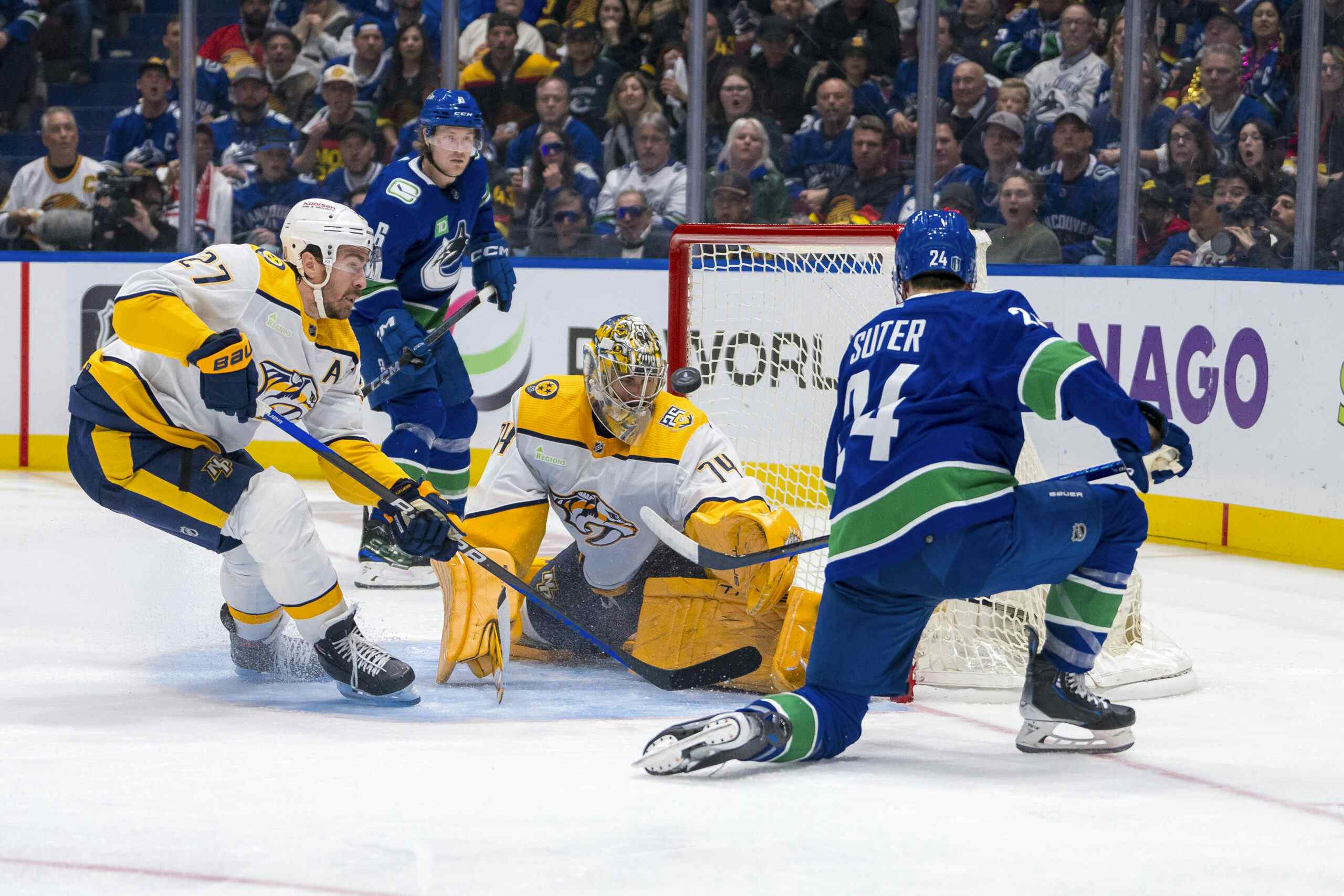Which Swedes fit the 51% rule at the 2017 NHL Entry Draft?

6 years ago
It’s May, which means the draft is rapidly approaching.
With the second round of the NHL playoffs well under way, 23 teams have turned their attention to next year. Focus has shifted to what changes teams can make to their roster and their prospect pool with the 2017 NHL Entry Draft in Chicago in mind.
In that pursuit, the league’s 31 teams will leave no stone unturned for advantages at the draft. The goal is to maximize the value of each and every selection. Their efforts won’t usually yield immediate rewards, but the decisions they make in Chicago can alter their course for years to come.
Former Canucks Army writers Josh Weissbock and Cam Lawrence beat the league to one of those discoveries, though. The pair noticed a trend among Swedish players. Skaters who played in the Swedish Hockey League at 18-years-old or younger with a points per game of at least .09 ended up playing 200 NHL games or more 51% of the time. Even among players with just a handful of games, the rule applied.
We affectionately refer to it as the ‘51% rule’.
Shawn Reis wrote about the 2016 draft class last year and players who met that same threshold. Obviously, we are only 11 months away from that draft, but some of the players Reis highlighted are showing encouraging signs of growth. Carl Grundstrom and Rasmus Asplund, in particular, have vaulted themselves forward in the world of prospect rankings.
There is a slightly different percentage for Allsvenskan players that I go on to cover as well.
With that, we can take a look at some of the players in the SHL and Allsvenskan that are first-time eligible who meet these requirements
SHL

There are some prominent names here with Timothy Liljegren, Lias Andersson, Kristian Vesalainen (who is Finnish), and Erik Brannstrom firmly placed as first round picks. The NHL’s Central Scouting Services ranked all four in their top ten among European skaters. But after that, there are some intriguing options.
The highest point per game player of the group is Jesper Boqvist, who at this moment projects to be a mid-second round pick. Then the next forward that wasn’t previously mentioned is Marcus Davidsson, who is also floating around the second round rankings too.
After that, Filip Westerlund and Rickard Hugg make an intriguing appearance on this list. Westerlund split his season between the SHL (33 games) and SuperElit U20 (23 games). He was overshadowed by Brannstrom and Liljegren at the U18 but still had an impressive performance in Slovakia with one goal and one assist. He is known for his calm, collected and smooth game. His PPG rate wasn’t that much lower than Brannstrom.
Hugg was over a PPG in the SuperElit U20 with 38 points (13-25-38) in 32 games, which earned him 11 games with Leksand’s SHL team. Despite only one assist, even getting to the SHL in your draft year is impressive. Hugg had a good showing at the U18 for Sweden with one goal and three assists. He’ll likely hear his name called in the 3rd or 4th round, but he is certainly an intriguing option.
As expected, pGPS looks very favourable on some of these players – with the following success rates available:

Vesalainen, Liljegren and Brannstrom have minimal matches, which accounts for their 0.0% Success Rate. There just haven’t been many players in history to do what they’ve done. Andersson, Boqvist and Davidsson are regarded well in this lens.
The names not included in the above chart had zero matches.
These percentages may change over the next couple of months as pGPS is continuing to be fine-tuned and adjusted to provide more in-depth analysis.
Allsvenskan
For the Allsvenskan, there are some changes to their success rate, but it still yields some interesting names. Rather than re-arrange his sentences, I will let Shawn Reis explain the difference for Allsvenskan:
Basically, it’s the same thing as the 51% rule, only applied to the Allsvenskan (Sweden’s second-tier league). Weissbock and Lawrence found that all U18 players that had played in the Allsvenskan with a points per game of at least .09 historically reached at least 200 NHL games played 33% of the time (31% of forwards and 37% of defensemen). It’s not as strong as the 51% rule, but that’s still a very good success rate.
Here are the 2017 draft eligible players who meet this requirement:

Obviously, this list has some lesser known players in it, as well as some repeats as some players split their seasons between the SHL and Allsvenskan.
The most notable name on the list is Elias Pettersson. Expected to be a top 15 pick in the upcoming draft, it’s no surprise that he shows up here. His point production was so high that there are no pGPS matches.
Liljegren and Boqvist appear on both lists, and with good reason.
The rest of the list are players who played a handful of games in the Allsvenskan and then spent the remainder of their seasons in the J20 leagues. Most are unranked, with the exceptions of Sylvegard and Lindstrom.
Conclusion
As always with anything like this, the goal is to combine the quantitative analysis with the scouting eye. If you can use both of these to make the most informed decision possible, then you are doing it right.
The obvious names from the two lists will hear their names called early in the 2017 NHL Entry Draft, but there are definitely some intriguing options that will be available in the later rounds. For example, Hugg had a reasonably noticeable U18 tournament last month and looking at his statistical output, projects well, despite being ranked 24th amongst European skaters.
It will be interesting to look back in July to see who was snapped up, and even more interesting to look at this list again next year.





